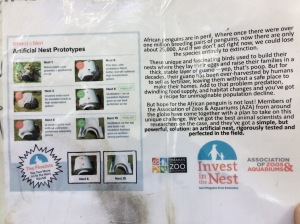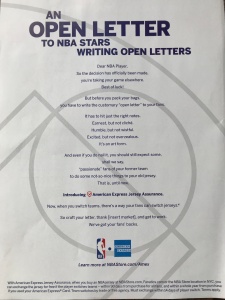You may have heard the old saying: “Once in a blue moon”, but, if you’re like me, you did not really know what that meant. A blue moon occurs when there are two full moons in the same month, and tonight is that blue moon – something that usually only occurs every two-and-a-half years.
Many people painstakingly plan each week or calendar goals over months or quarters but think about the things that you should do once in a blue moon. Should you schedule a full-garage organization in that interval? Is it a good time to have all the office upholstery sent out for cleaning? Maybe a blue moon can be a good reminder to have a full read-and-review of the employee manual?
Or think about making the next blue moon your target for your next big goal: learn another language, save enough to travel on a safari, or enter that marathon.
Once in a blue moon will come whether you make it a milestone or not. Take advantage of nature’s reminder to do those occasional tasks or start that long-term project.
(Next blue moon = October 31, 2020)

So many things that are old are new again, and the concept of a Salon is no exception. I’m not talking about a hair salon, which is the image I conjure up when I hear the word, rather a salon as a forum for discussion and debate.
A succinct description from my friends at Wikipedia: A salon is a gathering of people under the roof of an inspiring host. They are generally defined as a cultural event linked to literature, art or discussion. Historically, salons are associated with French literary and philosophical movements of the 17th and 18th centuries. In the 21st-century the tradition continues, with the modern-day cultural salon thriving in cities around the world.”
In London, salons are formatted similar to a live TED talk – with a 20-minute guest speaker to kick off the evening – with the goal of stimulating discussion afterward.
Topics have included literary works, philosophy, science and art and salons are held at different venues throughout the city.
I have always been a believer in the power of “live” events, and it appears that it holds true today for intellectual pursuits as well as entertainment. We would all be better off if we participated in civil, in-person dialogue instead of hiding behind impersonal social media. A good discussion coupled with rational humans and a good glass of wine could make for quite the stimulating evening!
Think about the role you could play as an inspiring host. Can you convene a meeting of the minds who would revel in a good discussion about art or literature or other ideas? You could be the one to create a salon environment to entertain your mind as well as your friends.
Thanks, Meg!

In the Human-Centered Design process, once you answer the How Might We question (see dot #2112), one of the next steps is to create a prototype of your idea. I will admit that when I first heard the word, I envisioned a fully-formed working model of something, but the rapid iteration of prototypes in this design process relies more on clay, construction paper and ingenuity. The goal is to make one aspect of the idea tangible so that you can share it – with the goal of learning from the feedback you receive.
As with the How Might We question, I was surprised at the impact of this technique. Initially, it felt like more of a crafts class than a helpful tool, but after putting prototyping into practice, I have become a believer in its power. Even a “mobile market” that was little more than paper fruits and vegetables taped to paper plates elicited design-changing feedback from the guests we recruited to role play a purchase.
 In a real and more serious scenario, animal scientists from around the world have been using the design process to create an artificial nest to prevent African penguin extinction. An international effort and prototyping have reduced the field to two designs that hold promise as a substitute habitat. While the designs may look similar, their nuances are distinct enough to matter to the penguins – something the scientists would not have known if not for prototypes and testing.
In a real and more serious scenario, animal scientists from around the world have been using the design process to create an artificial nest to prevent African penguin extinction. An international effort and prototyping have reduced the field to two designs that hold promise as a substitute habitat. While the designs may look similar, their nuances are distinct enough to matter to the penguins – something the scientists would not have known if not for prototypes and testing.
The next time you have an idea, set aside your hesitations and create a concrete version that allows you to learn about a key component of your plan. Even a rudimentary and seemingly amateur model can unlock lessons that will make your idea much stronger in the end.


A team of colleagues and I are enrolled in our second Human-Centered Design class to learn more about the problem-solving process that seeks to have the end user as the core component of all the design elements. There are many aspects to this process but one concept that you can apply in your work today is asking the question: “How Might We…?”
I have been astonished at the breadth and depth of ideas that come from asking this simple question. How Might We improve health in our community? How Might We reduce absenteeism in our schools? How Might We make fresh food accessible to senior citizens? How Might We provide clean water to impoverished communities in Kenya?
Asking this question at the onset causes you to focus on what you could do rather than being limited by what may be difficult to achieve. It inspires a bit of crazy – we could improve health by building a biodome park to allow activity during inclement weather or we could redesign refrigerators for pullout vegetable drawers or we could offer American Ninja Warrior programs at all elementary schools, etc. How Might We (lovingly abbreviated as HMW since it is used so frequently) places the emphasis on possible solutions and action.
The next time you are faced with a problem at work or home, start generating solutions by asking the HMW question. It is only one small aspect of the overall Human-Centered Design process, but one that packs a mighty punch on its own.

There is much written about the importance of belonging and the positive impact it has on well-being, but I have always been hesitant to fully embrace the concept as an organizational goal. Belonging is not something that can be easily facilitated or practiced every day. Belonging can also be seen as an extroverted concept and conjures up images of being part of a large group or team, something that is not comfortable for everyone.
I am much more in favor of the concept of “mattering” as described by Nancy Schlossberg and discussed in dot #416. Schlossberg’s research showed that people needed to feel that they mattered to someone else – a more personal concept than belonging – and something more easily accomplished one-to-one and in short-term situations. Mattering is the feeling that you matter to someone else and you would be missed if you were not there.
Another concept that resonated with me is that of “responsiveness”, written about in Power of Moments by Chip Heath and Dan Heath (see more about their book in dot #2107). The Heaths describe responsiveness as the core tenant of successful relationships. To achieve it, partners must provide: understanding, validation and caring – in other words, “attunement” to how we see ourselves, respect of who we are and what we want, then the taking of supportive steps to help meet those needs. Responsiveness makes relationships stronger and more secure, whether they be of personal or professional nature.
Hospitals that are more responsive to patient needs receive higher satisfaction scores. Employees who believe their supervisor is responsive to them as a person have greater engagement and productivity. Teachers who are more responsive to their students help them learn more effectively. Customer service representatives who are more responsive to their clients are perceived as serving them better.
While belonging to a tribe may be the long-term goal, an initial positive connection can be cultivated more quickly and frequently through one-on-one responsiveness and mattering. Whether you are on a client call, meeting with a colleague or supervising an employee, begin by learning what is important to them and then respond in a way that shows that it matters.

Most organizations don’t go deep enough when articulating to their customers and employees what they truly offer, but one hotel succinctly and clearly articulated their core purpose. You may think that hotels offer beds or showers or shelter, but, as one Holiday Inn Express described it, what they really sell is sleep.
Being clear about this purpose allowed them to take steps to ensure that they could deliver it. Signs were posted in the lobby reminding others to keep the volume down. There were signs on each floor outside the elevator. Each guest had to sign an agreement acknowledging that they understood the “quiet hour” policy and would abide by it. The hotel staff reminded guests of the policies during check-in. They were serious about it, and you could tell.
Think about the core service that you deliver. For banks, it isn’t checking or savings, rather security. For colleges, it isn’t credits or degrees rather opportunity. For restaurants, it isn’t the food, rather the ambiance and dining experience that allows conversation and connection to occur.
The Holiday Inn Express staff were not the only ones delivering “sleep” to the guests. They created an environment and culture where everyone in the facility was working toward the same end. Isn’t that what we all dream of for our organizations?


A colleague was asked to join an external committee that did not particularly interest him but since it was good for the organization, he agreed to serve.
“I’m going in with an open mind and a servant’s attitude,” he said.
What a beautiful sentiment. More could not have been asked of him, and I suspect that he was more conscious about his commitment than many others on the board.
The next time you are asked to do something that is worthy, but not especially exciting for you, approach it with the same openness. The right mindset may make it a positive experience in the end.

How can you be part of a global environmental movement tonight between 8:30-9:30pm? By participating in Earth Hour, a grassroots movement of the World Wildlife Foundation. Each year, one hour is chosen where it is encouraged to “go dark” to stimulate conversations and actions about long-term environmental issues. Tonight’s the night!
People in over 180 countries will participate by switching off their lights for one hour (local time). The Eiffel Tower, Empire State Building and other landmarks will be dark. Earth Hour encourages you to turn off your lights as well: dine by candlelight, go stargazing, head to bed early, or sit around the fireplace.
There is always a tension between thinking BIG about long-term goals and thinking small in order to achieve those goals. Earth Hour is an attempt to straddle that line as it encourages small grassroots steps for a short period in an effort to create short-term awareness that leads to actions far beyond the Earth Hour.
You can participate directly in this environmental movement, and you can replicate the idea for other purposes. A specific action outside the norm can go a long way toward creating awareness. Being in the dark may shed the light that is necessary for change to occur.

“We tend to remember the best or worst moment of an experience, as well as the last moment, and forget the rest.” This is the main premise of the book The Power of Moments by Chip Heath and Dan Heath, a fascinating account of how to intentionally orchestrate experiences to create moments that are memorable.
People have more opportunities to develop “defining moments” than they may first realize. The book cites examples of a high school that produced a “signing day” for college enrollment with all the pomp and circumstances of an athletic signing day, but for all students continuing their education. A resort created a binder of pictures showing what a child’s forgotten stuffed toy did on its “extended vacation.” A company created an intentional “First Day Experience” with messages from the chairman, a gift and group luncheon. Two high school teachers collaborated to create a mock trial in a real courtroom as a way to make an academic experience that was more memorable than prom.
It is in everyone’s best interest to create moments that matter. Not only do they provide a more satisfying experience for the customer, they distinguish the company from others that are likely providing the same service. A friend just recounted his round of college visits with his daughter and the sameness of all the presentations. What a lost opportunity to create a visit experience that was memorable, thus increasing the chances that someone will invest tens of thousands of dollars through their enrollment. McDonald's is losing market share (in my opinion) not because of the food, but because the experience of eating there ranges between generic and poor. Their once innovative Playland has become passé and they have done little to intentionally consider the dining experience. Contrast that with an Eataly restaurant where you can watch staff making pasta by hand or even with Five Guys who provide free peanuts and display the name of the farmer who grew the potatoes used in their fries that day.
Author Cesare Pavese said: “We don’t remember days, we remember moments.” Utilize the Heath Brothers’ resource to help you unlock the power of moments through intentionality instead of leaving them to chance.

Today’s dot provides an example of the flip side of the (lack of) service I wrote about yesterday. When it was apparent that no tailor was going to return my destroyed hat to normalcy, I went to Dick’s Sporting Goods to see if they still had the same item in stock.
The winter displays had been replaced with a mega-selection of baseball uniforms so I asked whether hats had been moved elsewhere or were gone. The clerk promptly radioed the “apparel manager” who returned moments later with hats from storage. They did not have the exact cap I wanted, so she brought the same style in youth sizes (in case it was not for me), and similar styles in two other brands. She even offered to price-match the more expensive one to the same price as the one I was seeking. When I hesitated, she went online and began searching there and successfully located it for me!
This staff member was a problem-solver – offering a multitude of alternatives and options in an attempt meet my needs as closely as she could. Note that she did not even have the product in stock that I wanted, but she still provided excellent service.
The experience at Dick’s was as good as the cleaners’ was bad. Remember my experiences when you train your staff. The reputation of your company resides in the front-line clerk.

On a whim of hopeful optimism, I took my winter coat, hat and scarf to the dry cleaners for the end-of-season cleansing. What I got back was a coat, a scarf and an unraveled pile of yarn.
 The once-was-a-hat was hanging in the plastic just like the other items, with no note or acknowledgment that the item was no longer functional. When I pointed the damage out to the attendant, she offered no apology. Instead, she took it back and said that they would send it to the tailor and if it could not be fixed then I could come back in and file a claim to receive pro-rated damages.
The once-was-a-hat was hanging in the plastic just like the other items, with no note or acknowledgment that the item was no longer functional. When I pointed the damage out to the attendant, she offered no apology. Instead, she took it back and said that they would send it to the tailor and if it could not be fixed then I could come back in and file a claim to receive pro-rated damages.
I am sure that this is not the first article to be damaged, making me wonder why there is not a process in place to address it in a way that preserves the customer relationship. It’s bad enough to ruin an item, but why make the client come back at least once, and only offer a partial settlement instead of replacing it? I wonder if I am going to get a refund on the dry cleaning cost!
Mistakes do happen, but I would have felt much better if they had said: “We want to let you know that the machine damaged your hat. We are so sorry! We sent it to the tailor who could not repair it, so here is a refund as well as no charge on your order.”
Every organization has processes that go wrong but don’t let your reputation unravel because of them. Customer service ratings are highest for organizations that effectively respond to service failures. You’d be wise to proactively prepare for missteps so you can wow your customers instead of losing them.
Almost immediately after the tragic bridge collapse in Florida, the National Transportation Safety Board (NTSB) sent staff to the site to conduct an investigation. I admire these problem solvers whenever I hear about their work on the bridge, watch Sully or learn that they are en route to investigate a recent train or plane crash. They are wading into an area where emotions are high, the evidence is damaged or missing and the consequences of their work are great.
I often wonder what it takes to be an NTSB investigator, but I think there are parallels between the role and that of a coach. Both positions must have subject-matter expertise, along with the ability to assess a situation and draw conclusions based on observations of what is seen – or not seen. Both positions must be masterful at noting the details and minor variances from the norm. Both need to be able to make recommendations that improve future performance, even if it is unpopular to say them.
In the TED Talk by Atul Gawande (see dot #2013), he describes how he learned from the coach who observed his surgery – but the coach had to know the field intimately in order to give the recommendations for Gawande to hold his elbow differently or know how to reposition the light. Not just any outside observer can be helpful.
Coaches and the NTSB are knowledgeable eyes and ears with the sole purpose of seeing the situation for how it actually is – not how it was supposed to be, or how we think it was or even how we want it to be. They become highly focused on reality, providing a mirror back to the affected parties to describe the current situation with raw realism.
I hope you are never in a situation where the NTSB is actually needed rather I wish that you find yourself often with the gift of a coach who can bring an outside perspective to your work.

If I say: “coaching,” what is likely to come to mind is either an athletic coach or coaching for an executive leader. Many people have a narrow definition of what coaching is and the benefit that it offers.
I recently watched a TED Talk by Atul Gawande who advocated for a broader view of the practice. “Coaching is how people get better at what they do,” he said. “If professionals don’t realize there are problems, then they stop making improvements.”
Gawande, a surgeon and social entrepreneur, has used coaching to improve himself in the operating room and to decrease infant mortality in Indian hospitals. He was reluctant to allow an outside observer in his operating room but did so when evidence convinced him of the value of coaching. Gawande thought he conducted a flawless surgery, but the coach provided him with a page of observations that Gawande did not recognize were happening, and recommended changes that have made a marked difference in his practice.
The TED Talk provides examples of how Itzhak Perlman’s wife used to coach the great violinist from the audience and how most people could benefit from the perspective another person provides. I know from firsthand experience that a coach can see things that elude you or become so much a part of your routine that you no longer question them (even though you should!).
“Coaches are external eyes and ears, providing a more accurate picture of your reality,” Gawande says. “They recognize the fundamentals, break your actions down and help you build them back up again.”
No matter what your line of work, if you are serious about improvement, don't rely on just yourself to get you there.
Watch Gawande’s TED Talk: Want to get great at something? Get a coach.

With the number of recent trades and team-swapping in the NBA, some fans are understandably nervous about investing in a jersey of their favorite player for fear that it may be obsolete in the short term.
The NBA Store and American Express have teamed up to offer a “Jersey Assurance” program that allows fans to switch jerseys if the player switches teams. With the number of restrictions on the program, it is unlikely that there will be a huge financial loss, but there could be a substantial gain.
The Jersey Assurance program is a way to encourage purchases but makes everyone feel better if a trade happens.
Think of how you can adopt a component of this program and do something to mitigate perceived risk. Maybe your providers aren’t traded, but providing some assurance to your customers is a slam dunk.


People generally want to be right. What makes it more difficult, even for open-minded folks, is to absorb the concept that while they may be right, others may be right, too.
This simple exercise can help illustrate the point.
If you look at the figure from this perspective, it is a 3:
 From this side, the same shape is an M:
From this side, the same shape is an M:
 But from this way, it looks like a W:
But from this way, it looks like a W:
 And from the other direction, it appears to be an E:
And from the other direction, it appears to be an E:
 Someone might see this drawing and report that it was an E, 3, M or W – and be correct.
Someone might see this drawing and report that it was an E, 3, M or W – and be correct.
The next time you hear a statement that differs from yours, think of this dot. Ask yourself whether they literally have a different point of viewing rather than a different point of view.
Thanks, Mike!
When someone does something that displeases you, what is your initial reaction? If you are like many, your tendency is to raise your voice, but it may be more effective to do the opposite. Silence can be a more powerful tool in your supervisory arsenal.
A colleague recounts the story of an employee who erred and after she gave her explanation and mea culpas, he sat there and nodded. The silence was more unnerving than a reprimand would have been, and she said so. “Aren’t you going to yell at me?” she asked. No.
In a vastly different arena than supervision, the puppy training manuals encourage the same treatment when the dog has an accident. Instead of scolding, ignoring the puppy and giving it the silent treatment is claimed to be more powerful. Puppies want affirmation and affiliation so instead of scaring it, shun it and behavior modification will come more quickly, or so the theory goes.
While I am not advocating for silence in all (or even many) situations, saying nothing does have its role. If the deed is already done, the person has acknowledged the error and learned from it, there may be nothing more meaningful to say.

Yesterday I went to a meeting to learn about new regulations for a grant I am writing. There is a substantially new financial reporting form, and within minutes of reading it, many of the attendees had questions about what information was needed. The administrator did not know the answers; the financial reviewer was not available, and we left the meeting with more questions than answers.
I think of how many times we are all guilty of preparing a new form or policy that makes perfect sense to us but ends up being confusing for the user. Wouldn’t we be better off if we made it a part of the process to test our products or process with those who will be using it before implementing them?
Prototyping is precisely the final stage in Human-Centered Design, where a model or draft of your concept is shared with those who will be engaged in the solution. The goal is to get feedback from the end users early in the process to reduce your risk, learn what is/isn’t working, and make iterations to change the design for the better.
It may feel like it takes more time to prototype and field test, but in the end, you’ll save yourself time and gain allies as you create a better process. What idea do you have that needs to go out for a test run before it’s final?

While waiting for a recent meeting to begin, the participants began discussing their dogs. My four-month-old is a cross between an English Cream Retriever and a Golden Retriever – and she was the most common of the bunch. Others had recently acquired a Bernadoodle (Bernese Mountain Dog/Poodle), a Cockapoo (Cocker Spaniel/Poodle) and Goldador (Golden Retriever/Labrador). What happened to the generic Beagle?
It seems that genetic engineering is prevalent in the dog world these days. Science has made it possible to take positive traits from one breed (i.e.: no shedding) and blend it with desired traits from another lineage (i.e. great personality). It has resulted in a robust market for all kinds of hybrids and “boutique dogs.”
It got me wondering why the same principle couldn’t be applied in organizations – taking the positive aspects of one service and crossing it with desired characteristics of another. It already happens in many online professional development courses – mixing low cost (online learning) with relevant material (formal education). Planet Fitness combines the best of gyms (equipment) with a casual user model instead of bodybuilding (free training). Southwest took the self-serve aspects of bus travel and the speed of air travel to create its model.
Ask yourself the “if only” question. If only…retrievers didn’t shed so much. If only fitness trainers were included in membership so people actually kept going. If only affordable education was offered on topics that adults really wanted to learn…Then create a new hybrid combination of your own that gets your client’s tails wagging.
 Goldendoodle
Goldendoodle
Instead of utilizing an outside contractor for the administrative office renovation, a local organization opted to deploy the services of their company’s in-house facility crew. The decision was made primarily to save money, but it yielded unexpected benefits that are even more enduring than the new walls and furniture.
Members of the facilities staff, who normally do their work outside of the headquarters area, were suddenly face-to-face with the organization’s leadership for an extended period of time. Administrators interacted with facility staff – and gained an appreciation for the quality of work being accomplished. More than that, the interaction led to humanizing of both teams – it was no longer “THE Administration” or “Facilities”, and instead became Joe, Tammy, George and Ann.
The renovation project provided an opportunity for two groups to collaborate in ways they had not previously done and resulted in cost savings, connections and a source of pride in the new space.
Think about how you can utilize in-house groups to work together in ways that do not normally overlap. Can the front-line staff work together with the senior leadership on a process re-design? Is there a way for middle managers to attend an interactive workshop with the board and humanize the other team? Can community members or neighbors be invited to serve on a task force that impacts how they interface with your organization?
Having an annual meeting or holiday social is better than doing nothing to cultivate camaraderie, but it is in the extended interactions that the real magic occurs. Try to overlap your disparate groups in ways that allow them to get to know each other instead of just meet each other. Even if it results in expenditures instead of savings, it’ll be worth it.

If I asked you what the purpose of the Post Office was, you might answer “to deliver the mail.” While you would be correct, there is a deeper purpose to their work.
The official mission states: “The Postal Service shall have as its basic function the obligation to provide postal services to bind the Nation together through the personal, educational, literary and business correspondence of the people.”
It reminds me of Simon Sinek’s appeal to organizations to Start with Why and to articulate their underlying purpose instead of just sharing what they do or how they do it.
Clearly, the mission states a deeper reason for the Post Office's existence, but the Smithsonian Institution’s National Postal Museum (the former DC Post Office) has an even more emotional “why” chiseled on its building:
Messenger of Sympathy and LoveServant of Parted FriendsConsoler of the LonelyBond of the Scattered FamilyEnlarger of the Common Life
Carrier of News and KnowledgeInstrument of Trade and IndustryPromoter of Mutual AcquaintanceOf Peace and of Goodwill Among Men and Nations.
Think of how you describe the work you do. Is it: “deliver mail”, “provide postal services to bind the National together” or to be a “Messenger of Sympathy and Love…”? Your work may be more meaningful if you articulate the meaning behind it.
Source: USPS Historian

Intellectually we know that if we recycle items that they are repurposed into other goods, but the process by which this happens is elusive. Several stores have added displays to make a more direct connection between recycling and its end game.
Madewell clothing promotes recycling of jeans – which are then turned into housing insulation. Their “donate your jeans program” has prominent displays in the front windows and throughout the store, making a connection between products that most people would not normally associate together.
The Eataly supermarket shows how their carts come from recycled bottles hopefully helping customers see that recycling actually does have its benefits (in addition to giving the franchise recognition for its environmental consciousness!)
Many organizations are doing good things in the area of sustainability. Follow the lead of these two businesses and connect the dots between efforts on the front end and their implications. We all like to see a happy ending to the story.


When we are accounting for resources or making claims about our assets, we often look inward to determine the tally. But one school in Boston took a broader perspective of the benefits it has to offer students.
Suffolk University proclaims: “1,877 law firms on campus” because it adds “Our campus is Boston.” They are wise to take advantages of the resources of their urban environment and to consider what the city offers for students instead of trying to duplicate it.
Think of how you can reframe the resources you have within your circle. Do you take into account what connections your office complex could offer or what talents could be shared? Have you considered what benefits are available when you redefine the parameters as the “Catholic community” instead of just your parish? Or when you see yourself as a member of “youth sports” instead of the soccer club?
Recast your vision to see what connections you can create with an expansive worldview.
Thanks, Meg!

Supervision is strength training for the organizational body.
“When properly performed, strength training can provide significant functional benefits and improvement in overall health and well-being.*” The same is true of effective supervision.
Like strength training that provides a host of residual benefits, strong supervision reverberates throughout the entire organization. Effectiveness, efficiency, morale and output are all improved and there is reduced potential for unchecked failures. Supervision is one of the few skills that is personally rewarding in addition to enhancing organizational production.
And, like strength training, it is not glamorous. You cannot achieve mastery in one session or without continued investment in building the trait. You need to start small and do many reps to achieve results. You begin physical training with the torso and strengthen the core first, using a variety of techniques and working different muscles. You also master core supervisory skills before building on them and tailor techniques to the specific person or group you are targeting.
Strength training helps the whole body enhance its function and endurance through incremental improvements. It improves energy and confidence, decreases stress, improves cognitive function and boosts energy for an extended period after contact.** Supervision helps an organization do the same.
Build your organizational muscle by embarking on a supervisory strength training regimen. Your entire organization will benefit from the capacity you create.
Sources: Wikipedia* and Nerdfitness.com**

Happy International Women’s Day!
This holiday has been designated for many years, but it seems to be receiving much more attention this year in the midst of #MeToo, women’s marches, Time’s Up, and a general mobilization of female activism.
To celebrate this year, McDonald’s has flipped its arches for the first time in history and will be featuring upside-down arches (to form a W instead of an M) on all of its digital platforms. While it is sure to garner media attention, it seems a bit off-brand to me. McDonald’s isn’t a particularly female-oriented business and it seems a stretch to make such a statement about one segment of the population.
Mattel, on the other hand, tied into International Women’s Day to launch a new line of diverse Barbie dolls representing 11 countries. This is far more aligned with the holiday and their customer base and, in my opinion, was a fitting release date.
Other businesses are just trying to capitalize on the momentum around the day and the women’s movement by offering an array of “women-themed” products. This, too, seems to be commercially motivated rather than genuinely relevant to the event.
There are literally holidays for every day of the year and a plethora of causes that could link to your marketing efforts. Think carefully before you jump on the "brand-wagon" and alter your products or messaging because of them. Authenticity drives revenue in the long term.

There is a woman who I would guess to be in her 80s that walks by my house every day. Every. Day. She is more durable than the Post Office who delivers in snow, rain and heat because she walks on Sundays, too. No matter the weather or conditions, this woman trudges up the hill and makes her trek.
I think about her persistence – as I watch from my heated or air-conditioned office – and doubt that she questions her activity. I would guess that her walking is a habit – just as much a part of the day as eating meals or brushing teeth.
Gretchen Rubin advocates the cultivation of habits because they reduce (remove) the mental capacity necessary to make a decision. You don’t have to think about it -- and thus lose emotional energy in the process – you just do.
I admire those who engrain habits into their lives for the tough stuff. I have written 2090 dots and the process of sitting down to do them still doesn’t come easily. Often I spend as much time thinking about what to write as I do on the actual writing. I also think about whether I should take the dogs for a walk – is the weather ok, are the sidewalks free of salt or puddles, etc. I wish it would come naturally to just do it every day like this woman and not think about it.
I have quoted Susan Power before who writes that “motivation is in the doing.” Energy is generated in the doing too and depleted in the thinking-about-doing. Strive to minimize your energy loss by creating habits instead of daily decision points.

In one of the Red Carpet interviews before the Academy Awards, director Gretta Gerwig was credited with bringing Lady Bird to life through the attention to detail and realistic elements that were infused in her story. “The more specific something is, the more universal it ends up being,” actress Beanie Feldstein reported Gerwig as saying.
This statement is true for the movie, and I think it has broader applicability. I have been a proponent of specificity for decades, and it is that concreteness that often makes an example come to life as a teaching tool for others. I know that in my workshops participants want a detailed script of how to address accountability, or an actual evaluation or attributes list so they can adapt it to their own use. If I provide something that is just a general outline it seems to have less relevance and transferability.
If a story is specific, it becomes believable and thus we connect with one aspect of it and relate it to our lives. I just finished reading Donna Tartt’s Pulitzer Prize-winning The Goldfinch and her descriptive genius made me feel as if I was in the museum with the main character. Its richness helped to make it a universal story about friendship and self-reliance.
The next time you are tempted to convey your message with broad strokes, think about Gretta Gerwig’s quote. Provide the specifics to picture ourselves in your story so we can extrapolate meaning from there.

“How many books have you read?” That was the question one of my students asked me as I quoted a theory by memory in class last week.
The answer is “a lot – a very lot,” but what could make it seem like even more is that I read with the aim of applying the information that I read. My goal when I read a book (or article) is to distill one key nugget from it that I can remember and use. The information may be applicable for a blog, a class lesson, a workshop, a conversation starter or a tidbit to share with my sister in a letter, but my aim is to take away one tiny piece that I can add as a tool in my repertoire.
I think we often are exposed to so much information that we fail to absorb it in meaningful ways. By training myself to take a moment to capture one piece, I think it helps me to remember even more of the material.
I have used this technique with my students – I require them to read a book for class and then do a final presentation that teaches their classmates one point from the book. It’s far more engaging and beneficial than having them attempt to cram 200 pages of content into a ten-minute monologue where no one remembers anything that was said.
Think about using the “one point” method when you are processing input. Whether you attend a class/workshop/lecture, read a book/an article/a blog, or partake in any learning opportunity, I believe you’ll get more out of it in the short term if you position yourself to use one piece of information in the long term.
[See dot #108 on how to apply your learning nuggets to meetings.]

When the Hynes Convention Center was built in 1988, none of the architects could have anticipated that there would be a great demand by delegates for power outlets. The same is true for airports and most public spaces. Even with the relatively low cost and ease of attaining supplemental batteries, everyone seems to want to plug in their device and access wi-fi on demand.
Hynes has retrofitted its public spaces to incorporate charging stations in each of the planters in the lobby. During the convention I attended, these gathering points were in frequent use as people sat around watching the battery on their phone turn green. They are so popular that directions to “charging stations” even have been added to the master signage in the building.
Think about your product and what you might need to modernize to meet consumer demand. Cars have added USB ports as a standard feature. New shopping carts come with cup holders. Buildings come with Family restrooms. Businesses have added scanners for Apple Pay and Google Pay to accommodate electronic funds. What can you retrofit in your organization to retrofit your services for modern times?


What is the number one thing you hope to get out of a professional conference that you attend? I think for many people the answer is either making a connection – expanding their network to meet someone who can help them in the future – or gaining a new idea that will move them forward either personally or professionally.
The American Society for Association Executives (ASAE) accomplishes both at their Great Ideas conference through a Braindates component. Braindates are pre-scheduled, one-on-one meetings with fellow participants. Through an app, attendees can pre-schedule conference time to meet with others on key topics either to offer insights or to gain them.
I think Braindates should be a standard feature at all professional conferences. It avoids having participants rely on a happenstance meeting and spares people the awkward process of trying to find someone who may be a good connection. It also makes it easier for those willing to share expertise to have an informal forum to do so.
Think about how you could add a Braindate to your next event, or even provide a process for them to occur in your organization. Everyone wins when you foster connections and cultivate ideas.

There was a meme on social media suggesting that the NRA becomes the National Reading Association and all the money currently spent on lobbying be redirected to libraries. Whether you agree with that idea or not, I think everyone can agree that fostering a love of reading among children is a good thing.
Today would be Dr. Seuss’s (Theodor Geisel) 114th birthday. It has become a day to celebrate reading – a present he would have been sure to enjoy. In our town, dozens of local leaders are participating in Read Across America Day by reading a Dr. Seuss book to elementary students across the tri-states. I will spend the afternoon making silly noises with kindergartners as I read Mr. Brown Can Moo – Can You? to them. I can hear the giggles now!
In addition to their on-going reading efforts, the school districts have highlighted reading by allowing the guest readers to come into the classrooms today. But it’s not only young people who need to read. Adults can benefit from the input non-fiction works provide them and they can be transported to another place and reduce their stress through the literary world of fiction.
Think of how your organization can incentivize reading by your staff. Maybe you can make it a norm to put a “reading hour” on the calendar – starting with the boss modeling this behavior. You can provide milk and cookies one morning a month and encourage staff to clear their calendar to delve into a new book in their field. You can ask for reading reports or recommendations at meetings. Start a voluntary book club with your staff. Put in a lending library. Offer each staff member one book a quarter on Amazon.
Whether through guest readers or organizational incentives, cultivating reading habits is a benefit to all. Break your routine of flipping on the television or grabbing an electronic device, and discover the magic that lurks in between the paper pages.

If you remember the Academy Awards last year, it ended with the wrong film being announced as the Best Picture winner. It was a major faux pas that overshadowed the honor as well as the rest of the show.
The accounting firm responsible for the error (PwC) and the Academy have gone to great lengths to ensure that it doesn’t happen again on Sunday night. They have been meeting since last year’s show to develop new processes to prevent a repeat of the error. Among the new procedures: The presenters will confirm their envelope has the right category before they step up to the podium and this process will be overseen by a third person; PwC staff will be attending rehearsals plus another partner will be in the control room monitoring the show, and there is a new protocol for what to do if something does go wrong.
All of this is seems to be an overcorrection for a mistake that already occurred. Why wasn’t any of this in place to prevent the error in the first place?
It’s easy to jump in and develop a host of recommendations in retrospect. The goal should be to have double checks in place to prevent an issue from happening at all. Instead of going overboard and creating a multitude of procedures to correct one problem that occurred, how can your organization take a balanced approach to anticipating points of possible error and mitigating them from the start?
Keep the spotlight of your diligence diffused across the stage instead of only shining on one small spot.








































